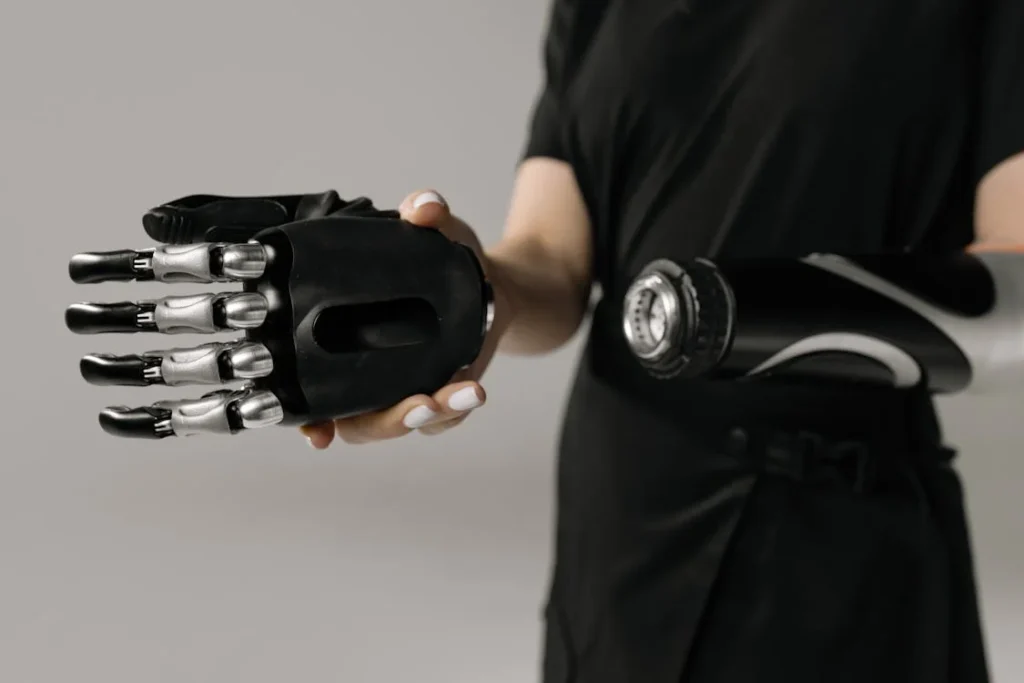Helping a child with limb difference regain independence is about more than just giving them a tool to move—it’s about giving them the freedom to grow, explore, and feel confident in their own body. While traditional prosthetics have made great progress, there’s a newer technology that’s starting to make a real difference, especially for young users. These are called myoelectric prosthetics.
Myoelectric prosthetics don’t rely on straps, cables, or body movements to work. Instead, they use the child’s own muscles to control the limb. By picking up small electrical signals from muscles in the remaining part of the arm or leg, these devices can open and close a hand, rotate a wrist, or perform other movements—all with just a natural muscle contraction.
This sounds impressive, but is it really the right choice for kids? And more importantly, can these high-tech devices actually help children lead better, more active lives?
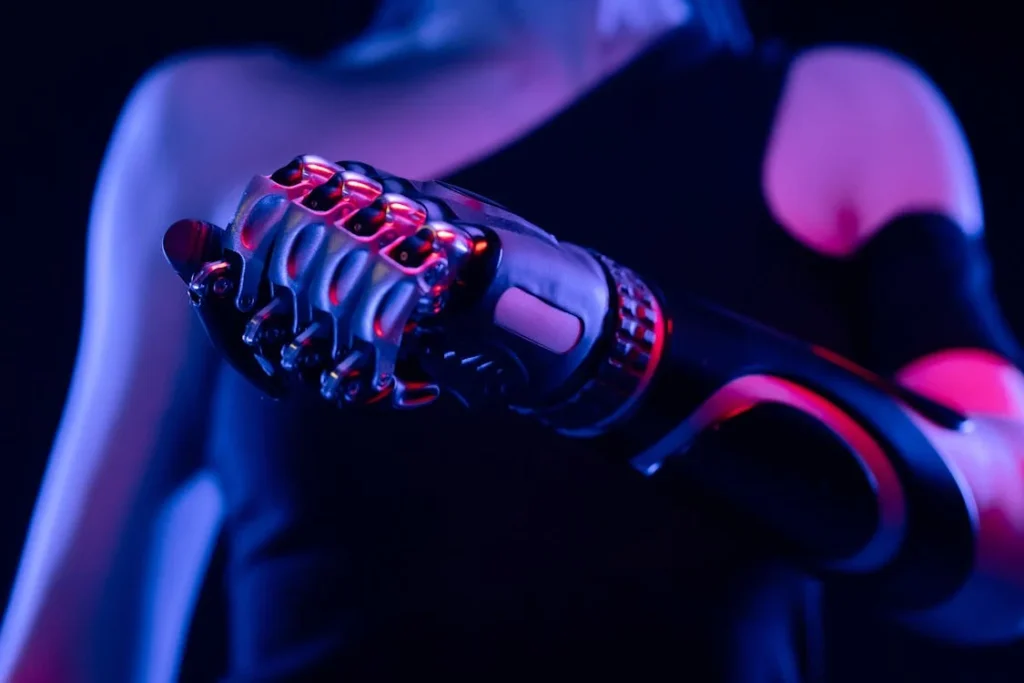
What Are Myoelectric Prosthetics and How Do They Work?
Understanding the Basics
Myoelectric prosthetics may sound complex, but the idea behind them is simple. These devices use the electrical signals from the muscles in the body to power movement in a prosthetic limb.
When a person tightens or activates certain muscles—like the ones in the upper arm—tiny electrical signals are created under the skin. Myoelectric sensors pick up these signals and translate them into movement in the artificial limb.
For example, if a child with an arm difference tenses a certain muscle, that signal can be used to open or close the fingers of a prosthetic hand. With practice, the child can learn to control the hand in a way that feels natural.
They can pick up toys, hold a cup, or even use tools like a crayon or fork, depending on the design.
Unlike body-powered prosthetics that rely on harnesses and shoulder movement, myoelectric limbs give children the freedom to move more naturally.
There are no cables or straps pulling across the body. The control happens quietly and almost invisibly—through the muscles they already have.
Why This Matters for Kids
Children are always moving, learning, and growing. They explore the world by touching, playing, and doing things for themselves.
A prosthetic that limits movement or feels unnatural can slow this process down. That’s why comfort and control are so important.
Myoelectric prosthetics allow children to use their remaining muscle strength in a way that supports growth—not just physically, but emotionally too.
When a child can use their prosthetic to do everyday tasks, they feel more independent. That independence builds confidence, and confidence leads to even greater learning and social connection.
With a myoelectric hand or arm, children are not relying on awkward motions or bulky straps. Instead, they’re using the muscles they already have, just in a new way.
This creates a smoother learning curve and encourages consistent use.
It also helps them feel less “different.” The design of myoelectric limbs is often sleeker and more human-like, which means the prosthetic draws less attention in social situations.
And when the child does want to talk about it, they can do so with pride—because they understand how it works and what it helps them do.
Adjusting to Growth and Movement
One concern with any prosthetic for children is how it adapts as they grow. Kids go through many stages—physically, mentally, and emotionally.
A prosthetic that works for a five-year-old may not meet the needs of a ten-year-old. With myoelectric devices, the technology can often be adjusted or reprogrammed as the child’s muscle strength and movement patterns change.
Some devices even offer different grip modes or response settings. This means a prosthetic can grow with the child—not just in size, but in ability.
As their coordination improves, the device can be fine-tuned to match their progress. This reduces the need for constant replacements and makes it easier for families to manage long-term care.

Advantages of Myoelectric Prosthetics in Pediatric Care
Supporting Natural Movement and Function
One of the biggest benefits of myoelectric prosthetics is that they move in a way that feels natural to the child.
Since these devices are controlled by muscle signals rather than body motion or shoulder tugs, children don’t need to change their posture or strain to make them work.
This leads to a smoother, more natural kind of movement that blends better into everyday life.
For young children especially, this can be a game-changer. Simple actions like turning a page, picking up a toy, or eating with a spoon become easier and more fluid.
It helps the child focus on the activity, not on how to operate the prosthetic. Over time, the prosthetic starts to feel like a natural extension of their body.
This natural control also makes learning easier. The more intuitive the movement, the quicker the child understands how to use the prosthetic effectively.
That confidence helps them participate more in school, in social settings, and in play—all of which are critical parts of development.
Emotional and Social Confidence
For many children, the way others see them matters just as much as what they can physically do. Children with prosthetics may sometimes feel nervous about standing out or being asked questions.
A sleek, myoelectric prosthetic can make a difference here. These devices are often designed with appearance in mind, helping children feel more comfortable in public or with friends.
It’s not just about looking realistic—it’s about helping the child feel proud of their prosthetic. When they understand how it works and see how it helps them, they’re more likely to talk about it positively.
That sense of ownership can make them more open to using it around others, instead of avoiding it.
As children grow older, this confidence only becomes more important. Whether they’re answering questions in class, playing with peers, or trying a new activity, being comfortable in their body—including their prosthetic—gives them a foundation of self-esteem that supports all areas of life.
Encouraging Long-Term Use
One challenge in pediatric prosthetics is keeping children engaged with their devices. If a prosthetic is too heavy, too complicated, or too uncomfortable, children may stop using it over time.
This can lead to weaker muscles, limited development, or the need for extra therapy later on.
Myoelectric prosthetics, when fitted and supported correctly, tend to encourage more consistent use. They’re lighter, more functional, and better suited to daily tasks.
This means children are more likely to wear them regularly, which helps them stay active and independent.
Parents often report that children who use myoelectric devices enjoy showing them to others, using them in different ways, and asking to wear them even outside of therapy or school.
This kind of enthusiasm is a sign that the prosthetic isn’t just useful—it’s a positive part of their life.
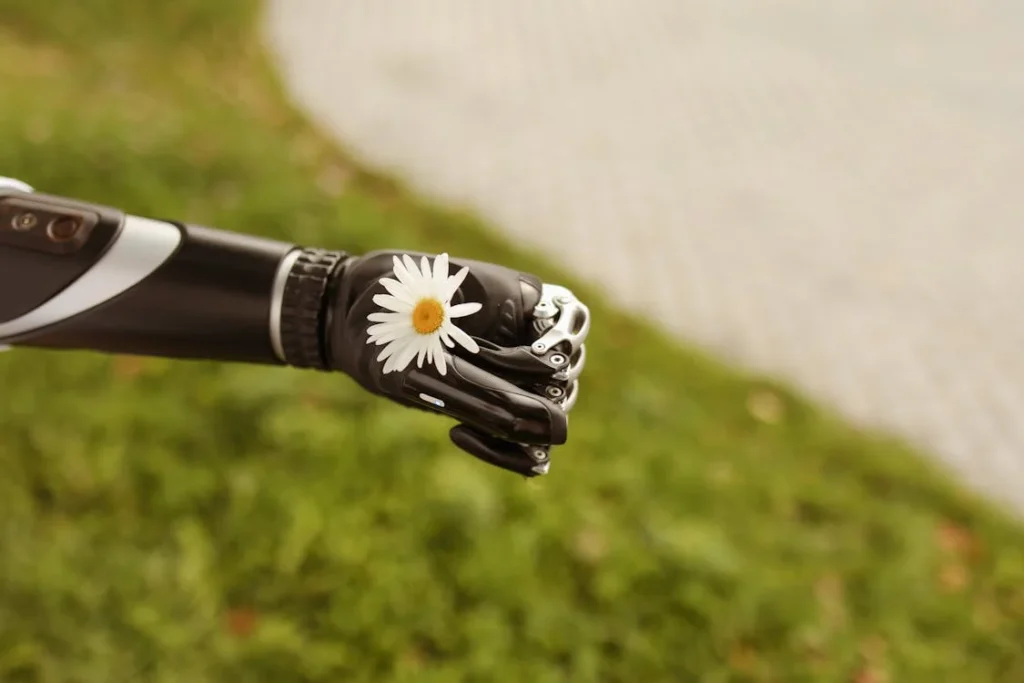
Challenges and Considerations in Using Myoelectric Prosthetics for Children
Learning Curve and Initial Adaptation
While myoelectric prosthetics offer many benefits, they also require learning and patience—especially in the beginning.
Unlike body-powered devices, which often work with basic physical movement, myoelectric prosthetics respond to very specific muscle signals.
For a child, especially a young one, understanding which muscle to flex and when can take time.
This learning process usually starts with training sessions guided by occupational therapists or prosthetists.
Children learn how to activate the sensors and control the limb step by step. These sessions often include playful tasks, simple routines, and repetition.
Progress is gradual, and early frustration is common, especially if the child expects the prosthetic to work just like a natural hand right away.
In some cases, younger children may struggle with staying focused during training, or may not have enough muscle development to trigger the sensors consistently.
This doesn’t mean the prosthetic won’t work—it just means extra time and care are needed. Support from family and therapists during this phase is essential to keep the child motivated and confident.
Maintenance and Technical Support
Myoelectric prosthetics are electronic devices. Like any electronic tool, they require maintenance and occasional repairs.
Sensors might shift, wires can loosen, or batteries need to be recharged or replaced. If the device stops responding or shows errors, it may need servicing.
For families in remote areas or without easy access to support centers, this can be a challenge. Not every clinic is equipped to handle myoelectric prosthetic maintenance, especially if the device is imported.
Even basic troubleshooting can feel overwhelming if families don’t know what to expect.
That’s why it’s important for caregivers to be well-informed about their child’s device—how to care for it, how to charge it, and how to clean it safely.
The better the upkeep, the smoother the experience. Choosing a prosthetic that comes with strong local support or clear service options can make a big difference in long-term satisfaction.
Cost and Accessibility
Perhaps the most common concern around myoelectric prosthetics is cost. These devices use specialized components, motors, sensors, and microprocessors, which can make them more expensive than traditional body-powered options.
For many families, especially in regions with limited financial resources, this can be a major barrier.
While the long-term benefits—such as improved function, comfort, and usage—may outweigh the cost, the initial price tag can still be hard to manage.
Some families are able to get support through government schemes, insurance, or nonprofit programs, but access to these services is not equal across all areas.
This makes affordability a key issue in expanding the use of myoelectric prosthetics for children. Manufacturers and healthcare providers continue to look for ways to lower costs, including local production, modular components, and simpler designs that retain core features.
As awareness and demand grow, more efforts are being made to bring these devices within reach of more families.
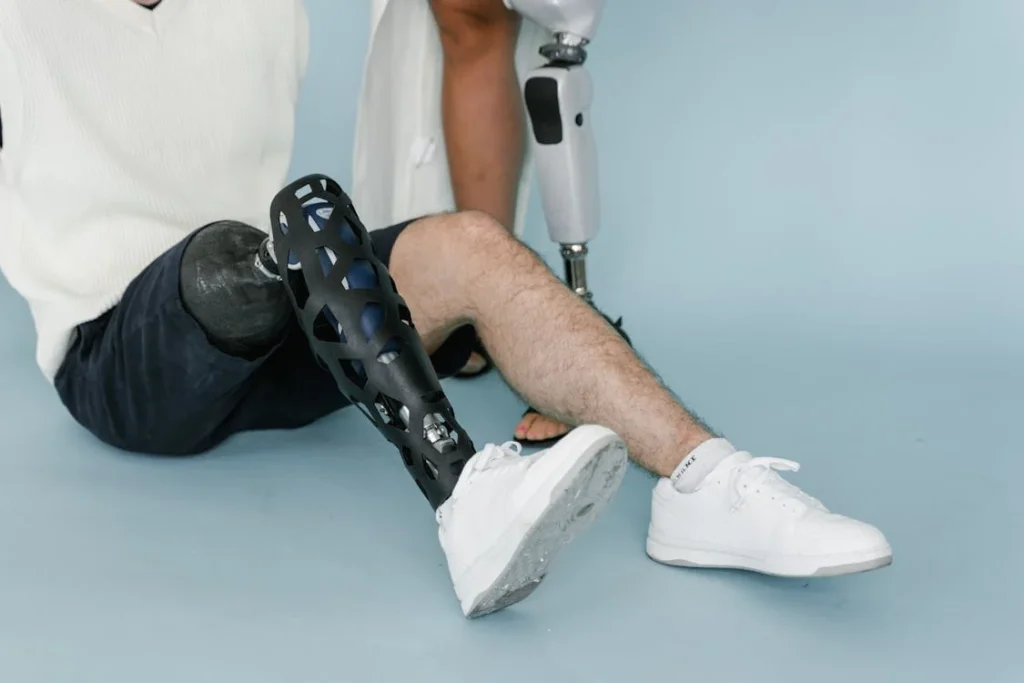
Are Myoelectric Prosthetics a Long-Term Solution for Children?
Adapting to Growth and Development
One of the most important questions when choosing any prosthetic for a child is: Will it grow with them? Children aren’t static—they change quickly in size, strength, coordination, and interests.
A device that works today might not be a good fit in just six months. That’s why long-term flexibility matters.
Myoelectric prosthetics can be adjusted and adapted over time. The internal software can often be reprogrammed to respond to stronger or more refined muscle signals as a child gains control.
New attachments or sockets can be added as the child grows. Some models are designed in a modular way, allowing specific parts to be upgraded without replacing the entire device.
This flexibility means the prosthetic can keep pace with the child’s development. As they become more active, more independent, or more curious about what they can do, the prosthetic can evolve with them.
This adaptability helps keep children engaged and invested in using the device, which supports long-term use.
Still, regular reviews are important. Children grow fast, and even a well-functioning prosthetic can become uncomfortable or outdated if it isn’t checked regularly.
Routine follow-ups with prosthetists and therapists help ensure the device still fits well, works smoothly, and meets the child’s changing needs.
Supporting Learning in School and Home Life
School is a big part of every child’s life. It’s not just about academics—it’s where they build friendships, discover their strengths, and practice real-life skills.
A prosthetic that works well in the classroom or on the playground can make a big difference in how a child feels about themselves and their place in school.
Myoelectric prosthetics, when adjusted properly, help children do everyday tasks more independently. They can write, eat, carry objects, open doors, and take part in group activities without needing as much assistance.
This independence can lead to stronger confidence and less reliance on teachers or classmates, which often improves the child’s comfort and participation in class.
At home, the benefits are just as real. Children can help with small chores, dress themselves more easily, or enjoy hobbies like drawing or building with blocks.
These moments may seem small, but they’re how children develop responsibility, pride, and a sense of ability.
With support from parents, therapists, and teachers, children can learn to use their myoelectric prosthetic as a tool for real-life success—not just as a medical device, but as something that helps them fully participate in their world.
Emotional Resilience and Identity Over Time
As children grow into teenagers and beyond, their relationship with their prosthetic often shifts. What began as a tool for learning and movement becomes a part of their identity.
For some, it becomes something they take pride in—a sign of strength and uniqueness. For others, it may bring mixed emotions, especially during teenage years when fitting in feels more important than standing out.
A myoelectric prosthetic, with its modern design and smooth function, can help support a more positive self-image during these changes. It gives teenagers more control over how they move, how they’re seen, and how they express themselves.
Some choose to personalize their prosthetic’s appearance, turning it into something that reflects their personality or style.
This emotional connection is key to long-term success. A prosthetic is not just a tool—it’s part of how a child moves through the world.
If they feel proud of it, confident in it, and supported in using it, they’re more likely to continue wearing it and benefiting from it for years to come.
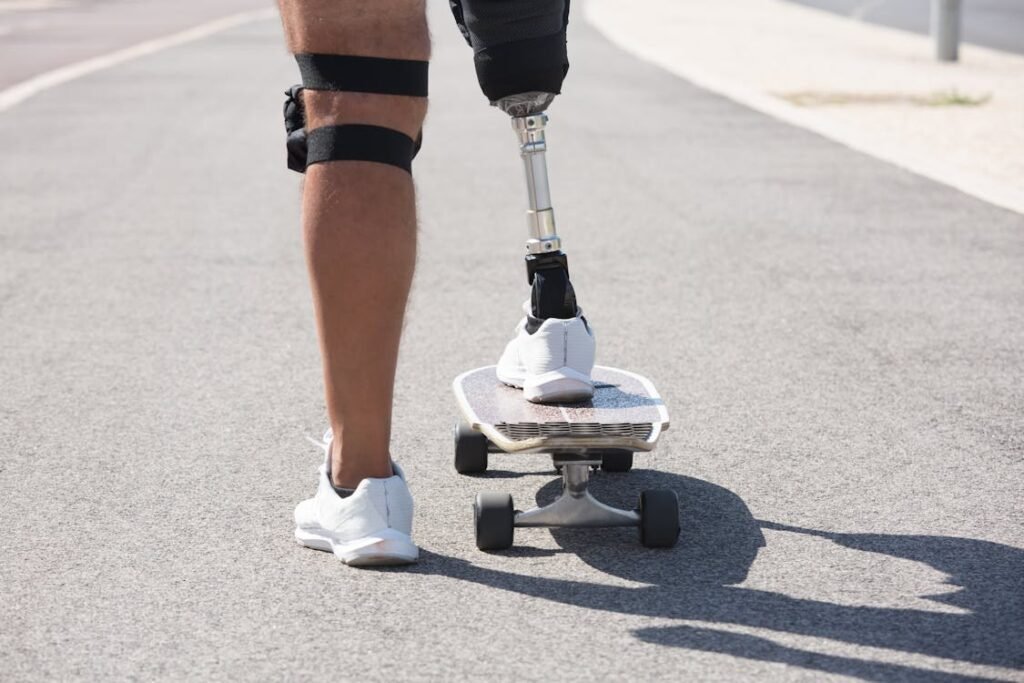
The Neurological Advantage: How Early Use of Myoelectric Prosthetics Shapes the Developing Brain
The Brain’s Ability to Adapt
Children’s brains are highly adaptable. In early childhood, the brain is constantly forming new connections through experience, movement, and repetition.
This is known as neuroplasticity. When a child uses a prosthetic—especially a responsive one like a myoelectric limb—during this critical stage, it helps the brain learn to treat the prosthetic as part of the body’s movement system.
This brain-body connection is essential. When a prosthetic is introduced early, and the child begins using it in daily tasks like reaching, grasping, or lifting, the brain starts mapping those movements just like it would with a natural limb.
This leads to smoother coordination and stronger control over time.
The earlier this process begins, the more natural the prosthetic feels. Children who start using myoelectric devices at a young age often develop more fluid and confident movement patterns than those who start later.
They also tend to rely less on compensatory movements—like overusing the shoulder or neck—which helps prevent future strain or postural issues.
Building Motor Memory Through Repetition
Just like learning to walk or ride a bicycle, using a prosthetic effectively is a skill. Myoelectric limbs require the brain to understand and control muscle signals in a very precise way.
The more often a child uses the device in everyday settings—picking up a cup, brushing teeth, or feeding themselves—the stronger those neural pathways become.
Over time, these movements become automatic. The child doesn’t have to think about how to open their prosthetic hand or grip a toy—it just happens naturally, like muscle memory.
This is critical because when movements are automatic, the child is free to focus on the activity itself, not the mechanics of doing it.
Early exposure to this kind of learning environment gives children a strong foundation. It trains their brain to include the prosthetic as part of their body image, which makes adaptation easier as they grow, take on new challenges, or use more advanced prosthetic features.
Encouraging Bilateral Brain Use
When a child uses both sides of their body regularly—including with the help of a myoelectric prosthetic—it helps stimulate more balanced brain activity.
This bilateral use supports problem-solving, coordination, and cognitive flexibility.
Without a functional prosthetic, children may become overly reliant on their unaffected side. While this helps them adapt in the short term, it can lead to imbalances in strength, posture, and brain development.
Over time, this one-sided reliance can affect how the brain manages tasks that involve timing, space, and fine motor coordination.
Myoelectric prosthetics make it easier for children to use both sides of their body together. They help restore symmetry in movement, which not only improves physical balance but also promotes more even brain development.
This can positively impact everything from handwriting and drawing to playing instruments or sports.

The Role of Family and Home Support in Myoelectric Prosthetic Success
Why Home Matters as Much as the Clinic
While fittings, therapy sessions, and clinic visits are important, the true test of a prosthetic happens at home—during breakfast, during playtime, at the dinner table, and while getting ready for school.
This is where a child learns to use their prosthetic not as a tool to be tested, but as part of daily life.
In the case of myoelectric prosthetics, home is where practice becomes habit. The muscle control needed to use these devices well improves only through repetition—and repetition happens best in familiar settings.
That means families play a central role in helping a child grow comfortable with their prosthetic.
Whether it’s encouraging the child to use their prosthetic to pick up a toy or letting them try to zip up a jacket independently, these everyday moments create real progress.
Small challenges, repeated daily, help the child build skill, confidence, and a natural relationship with their device.
Creating a Safe Space for Trial and Error
Learning to use a myoelectric prosthetic doesn’t happen overnight. Children may get frustrated when the hand doesn’t move how they want it to, or when a grip slips.
They may hesitate to wear the prosthetic for long periods or feel shy about using it in front of friends or siblings.
That’s where family response matters most. A home environment that welcomes trial and error—and celebrates effort instead of perfection—makes all the difference. Children need to feel safe failing, trying again, and slowly improving.
When parents, siblings, or caregivers show patience, encouragement, and praise for every small victory, children stay motivated.
This support helps keep the child emotionally connected to the process, even when it’s difficult. It also builds a more positive view of the prosthetic—less as a medical device and more as something empowering.
The Importance of Routine and Gentle Encouragement
Because myoelectric prosthetics rely on muscle signals, they work best when used regularly. Just like building strength at the gym, daily use helps muscles become more responsive and precise.
Establishing a routine—when the child wears the prosthetic, when they practice certain tasks, and when they take breaks—is key to making this progress steady.
Families can support this by weaving prosthetic use into daily life. This might include using the prosthetic during meals, chores, or even games.
The more natural the use becomes, the less it feels like a task and the more it becomes simply part of “how things are done.”
Importantly, this doesn’t mean forcing use at all times. Gentle encouragement, rather than pressure, works better—especially with younger children.
Giving the child choices and letting them take the lead when they’re ready can build a stronger, longer-lasting connection with the device.
Conclusion
Myoelectric prosthetics offer more than movement—they offer opportunity. For children, these advanced devices can open doors to independence, confidence, and a more natural way of interacting with the world. By using their own muscle signals, children learn to control their prosthetic limbs in ways that feel intuitive and empowering.
From smoother movement and better social comfort to brain development and emotional resilience, the benefits of myoelectric prosthetics extend far beyond technology. When introduced with the right support—from clinics, therapists, and especially families—these devices can become an integral part of a child’s growth, not just physically but personally.
Of course, challenges like cost, access, and training remain. But with thoughtful planning, community awareness, and a focus on long-term care, myoelectric technology can become more available to the children who need it most.
The question isn’t whether myoelectric prosthetics are the future of pediatric care. They’re already shaping that future. The real question is: how can we make that future more accessible, more inclusive, and more supportive for every child?



